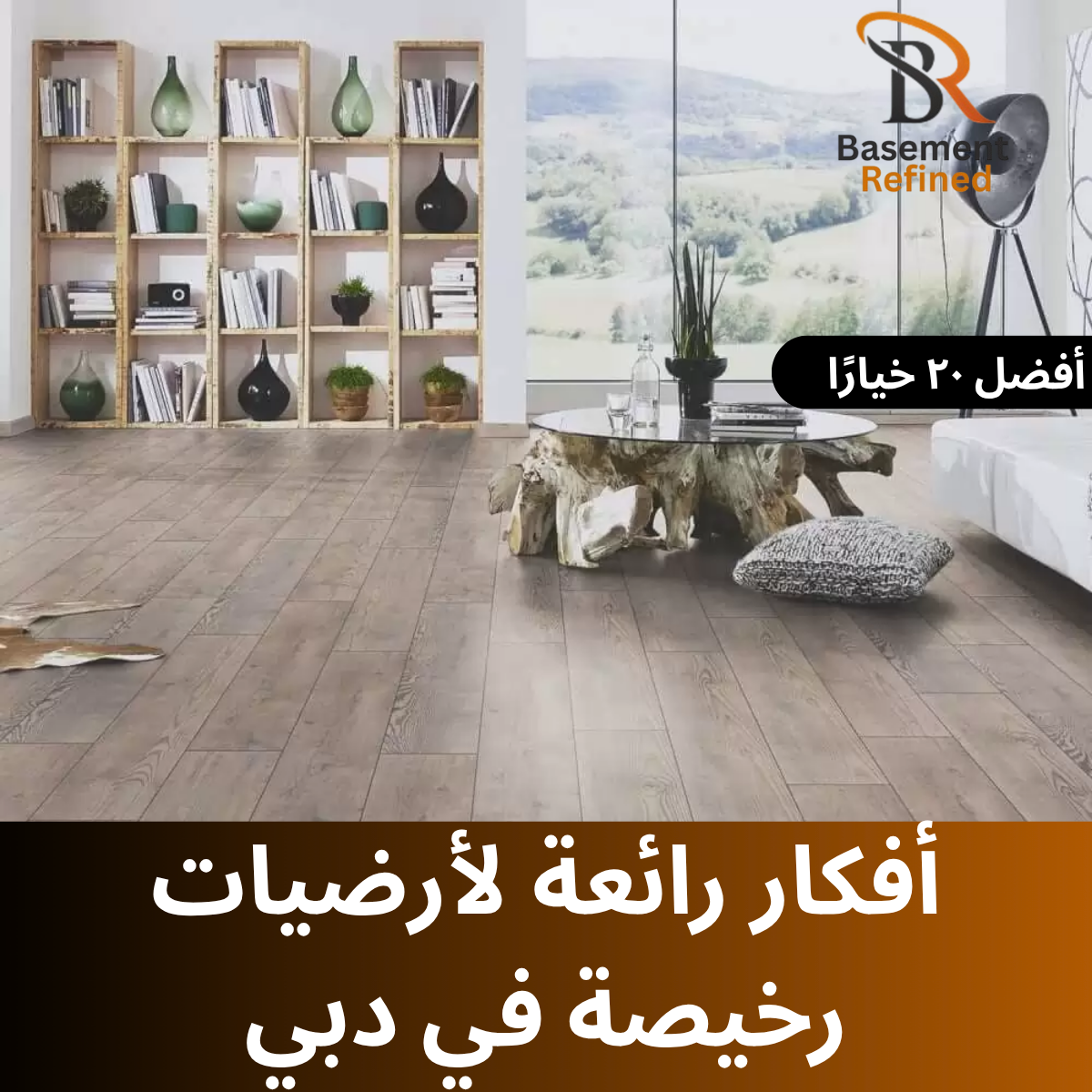Opening Hook
When the heavy rains hit Dubai in April 2024, hundreds of families woke up to water pouring into their villas and basements. Cars floated in garages, furniture was ruined overnight, and homeowners scrambled to protect what they could. For many, it was a wake-up call—flooding wasn’t something they thought could happen in the UAE’s desert climate. Yet, in just one day, neighborhoods were submerged. That event highlighted a hard truth: flood preparedness is no longer optional for UAE homeowners—it’s essential.
Why Flooding is Becoming a Real Concern in the UAE
For years, residents associated the UAE with dry deserts and controlled water systems. But recent climate shifts have changed the picture. Suddenly, heavy downpours combined with rapid urbanization have put drainage systems under pressure.

Furthermore, homes in low-lying areas or near construction zones are especially vulnerable. Basements, a common feature in many villas, often take the hardest hit. The result isn’t just water damage—it’s costly repairs, electrical hazards, and sometimes long-term health issues from mold growth.
As a result, UAE homeowners must start thinking ahead. A flooding response plan ensures that when the next unexpected storm arrives, they know exactly what to do to keep their families safe and minimize damage.
Read More: Basement Office Ideas – 11 Stylish Work From Home Spaces
Step 1: Assessing Your Home’s Risk
The first step in any flooding response plan is to know where your vulnerabilities lie. Is your home in a low-lying area? Do you have a basement prone to seepage? Is your garage lower than street level?
For instance, a family in Sharjah noticed water pooling in their driveway every time it rained, but ignored it until one storm flooded their entire ground floor. If they had recognized that recurring puddles were a red flag, they could have prepared earlier with barriers and pumps.
Furthermore, homeowners should review drainage systems around their villas. Clogged outdoor drains or poorly sloped landscaping can direct water straight toward a house. Identifying these weak points in advance gives you time to act before the skies open up.
Read More: Soil Testing Requirements Before Basement Digging
Step 2: Creating an Emergency Kit
A flood doesn’t announce itself politely. Sometimes you have minutes to react. Having a flood emergency kit ready saves critical time.
A well-prepared UAE homeowner might keep the following in a waterproof container:
- Flashlights and spare batteries
- First aid supplies
- Portable phone chargers (power banks)
- Waterproof document pouches for passports, property papers, and IDs
- Bottled water and non-perishable snacks
- A small toolkit and duct tape
- Sandbags or inflatable barriers (in flood-prone areas)
For instance, during the 2024 Dubai floods, many families were left scrambling to find candles, flashlights, and even drinking water when power went out. A simple kit could have provided peace of mind.
Read More: Ventilation Strategies for Shared Apartment Basements
Step 3: Protecting Electrical Systems
Water and electricity are a dangerous mix. UAE homes, with their heavy reliance on air conditioning and electronics, face serious risks when water enters.
Furthermore, many basements have electrical outlets low on the walls, which makes them early victims in a flood. Homeowners should consider:
- Elevating electrical sockets above possible flood levels
- Installing a circuit breaker that can quickly shut off power
- Keeping water heaters, AC compressors, and pumps on raised platforms
A Dubai resident once shared how his quick decision to switch off the main breaker saved his family from potential electrocution when water began seeping into his villa. As a result, teaching all family members where the main electrical switch is—and how to use it—is a life-saving step.
Read More: Safety Proofing Elderly Living Space in Basement
Step 4: Waterproofing and Preventive Measures
The best response plan begins before the flood. Waterproofing strategies can significantly reduce damage.
For example, homeowners can:
- Apply waterproof sealants to the basement walls
- Install sump pumps with battery backups
- Place flood barriers at entrances and garage doors
- Keep important belongings on higher shelves or raised platforms
In contrast, ignoring these steps often results in costly repairs. One Abu Dhabi homeowner reported spending nearly AED 40,000 on repairs after water destroyed her basement flooring and furniture. A small investment in preventive waterproofing would have cost a fraction of that.
Read More: Can You Use Natural Ventilation in UAE Basements?
Step 5: Coordinating with Neighbors and Community
Flooding rarely affects just one house—it impacts entire neighborhoods. Coordination with neighbors can make all the difference.
For instance, during the Sharjah floods of 2024, residents of one villa compound pooled resources to buy industrial water pumps and took turns clearing water. Their collective action saved multiple homes from deeper damage.
Furthermore, many UAE communities now have WhatsApp groups or neighborhood forums. Using these for quick alerts, updates, and requests for help strengthens everyone’s response. Flooding may isolate households, but preparation as a community builds resilience.
Read More: Best Flooring for Allergy-Free Basements
Step 6: Insurance and Financial Protection
While practical steps protect lives and property, insurance provides financial backup. Homeowners in the UAE often assume standard insurance covers flood damage—but policies vary widely.
As a result, it’s crucial to review your insurance documents carefully. Does your plan include “natural calamities” or “flood protection”? If not, ask about additional coverage.
For instance, one family in Dubai Marina discovered too late that their insurance only covered fire and theft—not flooding. The repairs cost them personally. In contrast, another family in Jumeirah with comprehensive coverage received quick compensation that eased recovery.
Read More: Basement Retaining Wall Rules in UAE
Step 7: What To Do During a Flood
When water begins to rise, safety comes first. Key actions include:

- Moving family members and pets to higher floors immediately
- Turning off the main power and gas supplies
- Avoiding contact with floodwater, which may carry sewage or chemicals
- Using sandbags or barriers to redirect water if it’s safe to do so
- Call emergency services (999 in the UAE) if the situation worsens
For instance, a homeowner in Ras Al Khaimah shared that staying calm and moving valuables upstairs early in the storm saved both possessions and sanity. In contrast, neighbors who delayed action lost electronics and furniture.
Read More: Best Water Alarm Sensors for :Basements Protecting Your Home from the Unseen Threat
Step 8: Post-Flood Recovery
The aftermath of flooding can feel overwhelming, but a structured approach helps. Begin by ensuring the property is safe to enter—no exposed wires or structural risks. Next, document all damage with photos for insurance purposes.
Furthermore, quick drying is essential to prevent mold. Open windows, run dehumidifiers, and use fans to speed up the process. Items like rugs, mattresses, and soaked wood may need to be discarded if heavily damaged.
One Abu Dhabi family, after the 2024 floods, learned the hard way that delaying cleanup by even two days allowed mold to spread, turning a minor problem into a health hazard.
As a result, acting fast not only saves money but also protects health.
Read More: Basement Cafeteria Setup for Joint Families
Balancing Preparedness with Peace of Mind
Flooding is stressful, no doubt. But homeowners who plan ahead find themselves calmer and more confident during storms. Just as people in earthquake-prone zones keep “go bags,” UAE homeowners must adapt to changing weather patterns.
Furthermore, building resilience doesn’t mean living in fear. Instead, it means creating a sense of control over the uncontrollable. Knowing you have a plan, tools, and insurance in place transforms anxiety into readiness.
Read More: What Causes Bad Basement Air & How to Fix It
Closing Reflection
The 2025 floods reminded the UAE that nature doesn’t always follow expectations. Even in a desert nation, heavy rains can change lives overnight. But homeowners who prepare—by assessing risks, safeguarding their homes, and planning for emergencies—are better equipped to face the challenge.
Floods test more than houses; they test resilience, community, and foresight. So as you look around your villa or apartment today, ask yourself: If water started rising tomorrow, would you be ready? The answer depends on the plan you make today.
🏗️ Basement Project Calculator
Latest Post
-
Basement Ceiling Ideas Hide Ductwork Smartly
Opening Hook Imagine walking into your basement in Boise, Idaho—where the ceiling is so low that you brush your head on the joists—and noticing a sleek, well-designed backdrop above you instead of exposed ductwork and pipes. That difference, thanks to smart basement ceiling ideas, transforms a cramped, unfinished area into a welcoming space for movie…
-
أفكار رائعة لأرضيات رخيصة في دبي | أفضل ٢٠ خيارًا
تخيل زوجين شابين في شقة مريحة في مرسى دبي، يخطوان حافيي القدمين على أرضية أنيقة بلمسة خشبية. غرفة المعيشة تتلألأ بضوء مسائي خافت، والأرضية تحتها لا تزال تبدو جديدة تمامًا رغم سنوات من الاستخدام – وكل هذا بميزانية محدودة. هذه هي قوة اختيار أرضيات جميلة ورخيصة في دبي: الأناقة والتوفير في آن واحد. التركيز على…
-
Beautiful Cheap Flooring Ideas in Dubai | Top 20 Picks
Imagine a young couple in a cosy apartment in Dubai Marina, stepping barefoot onto a sleek, wood-look floor. The living room glows with soft evening light, the flooring beneath still looks brand-new despite years of use—and all this on a budget. That’s the power of choosing beautiful, cheap flooring in Dubai: style and savings in…



